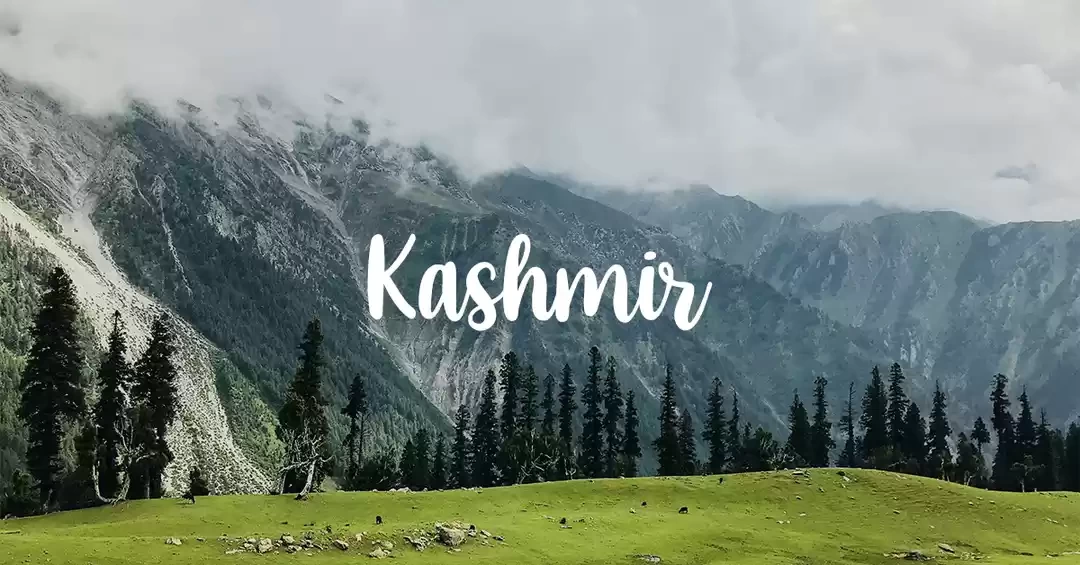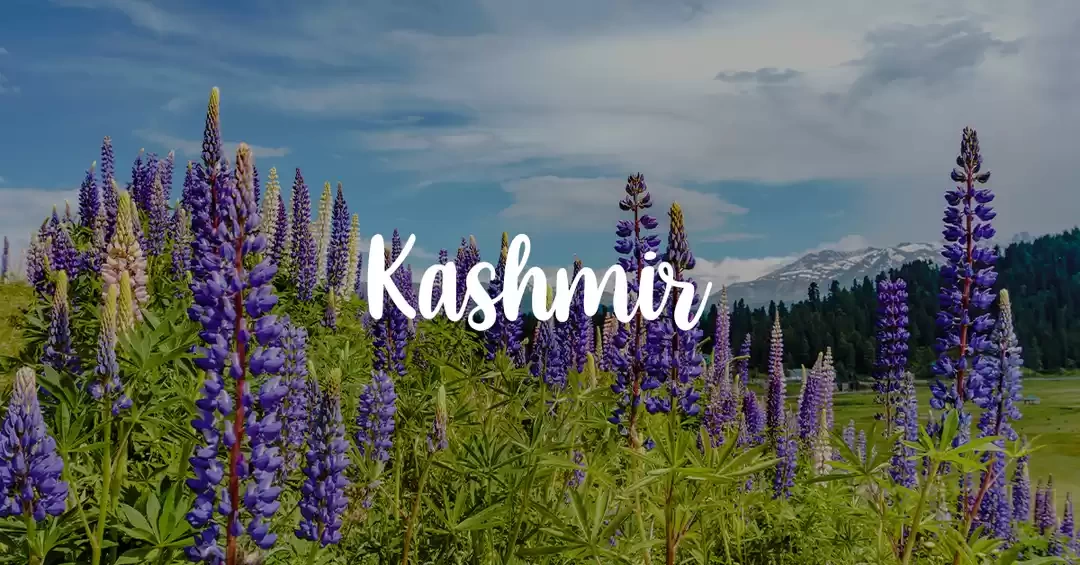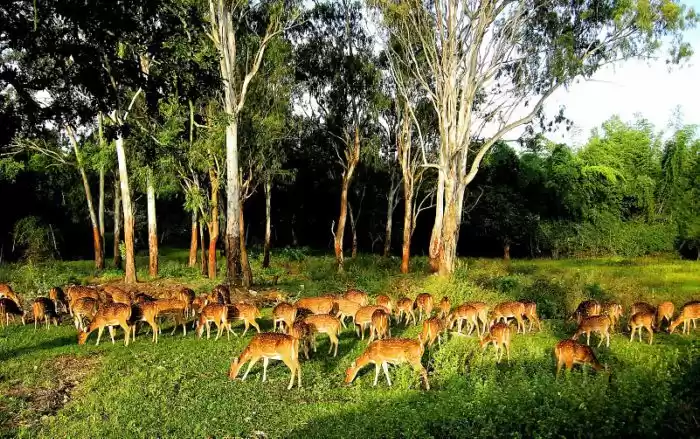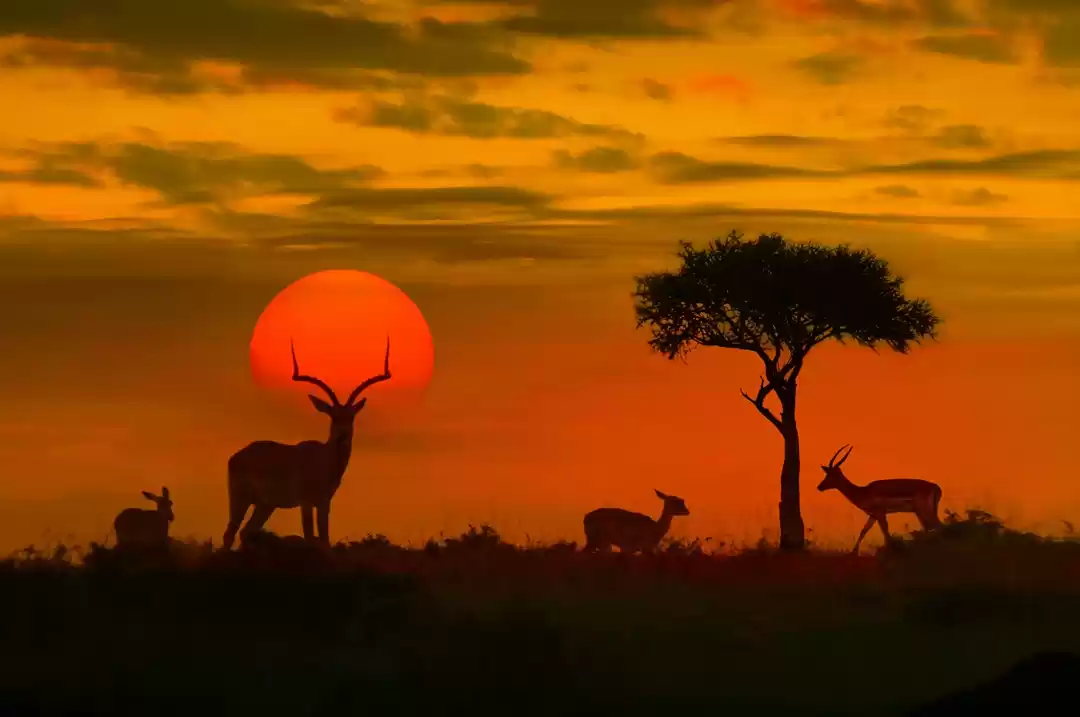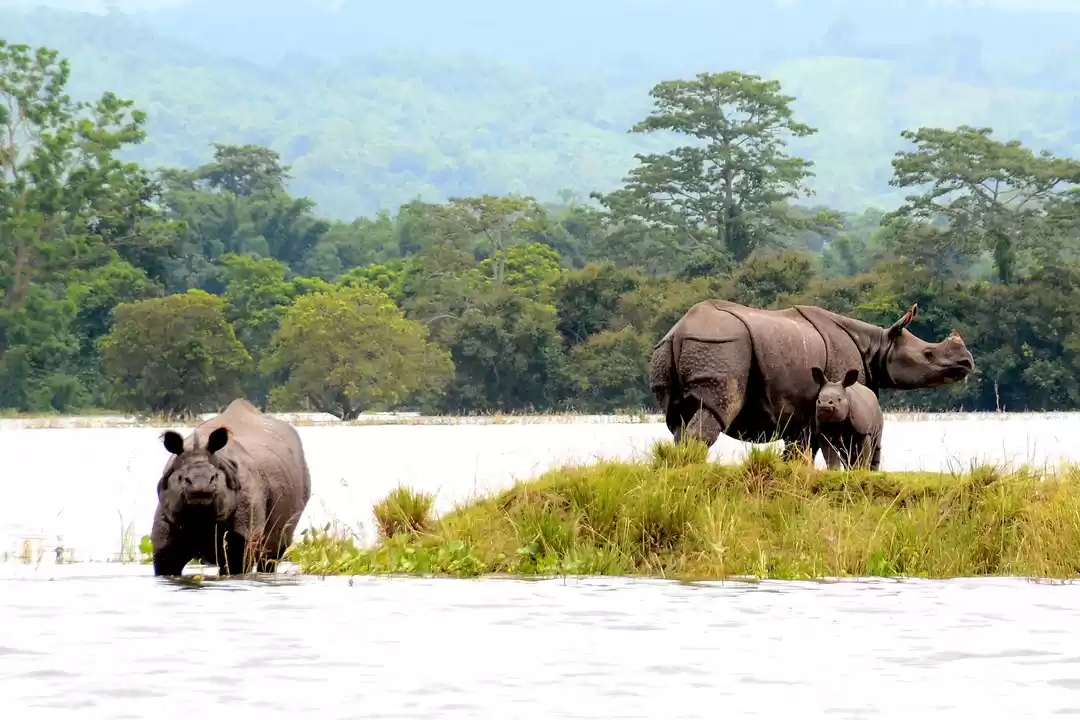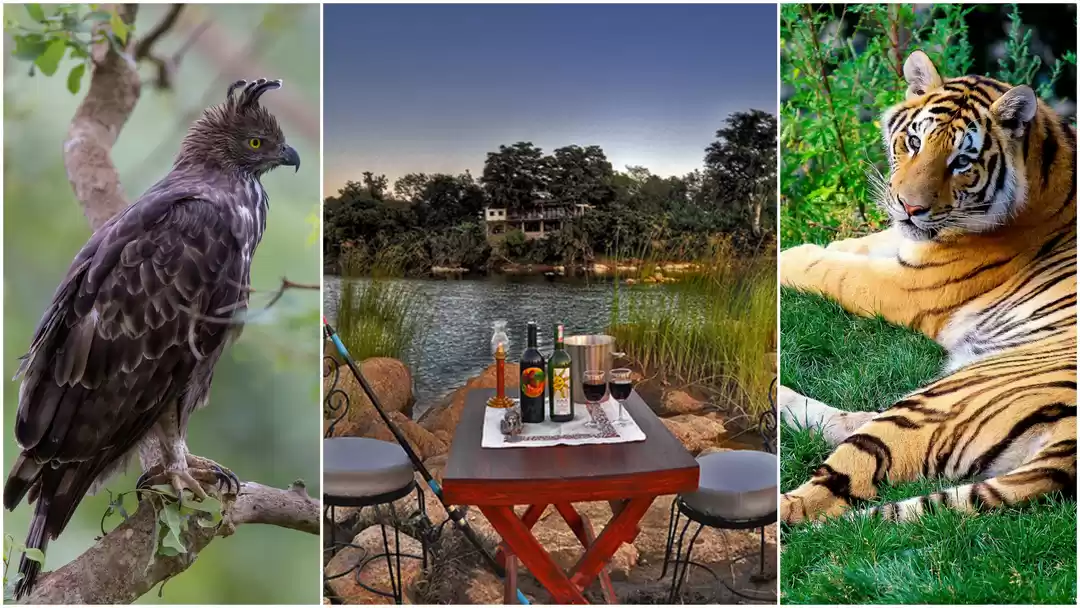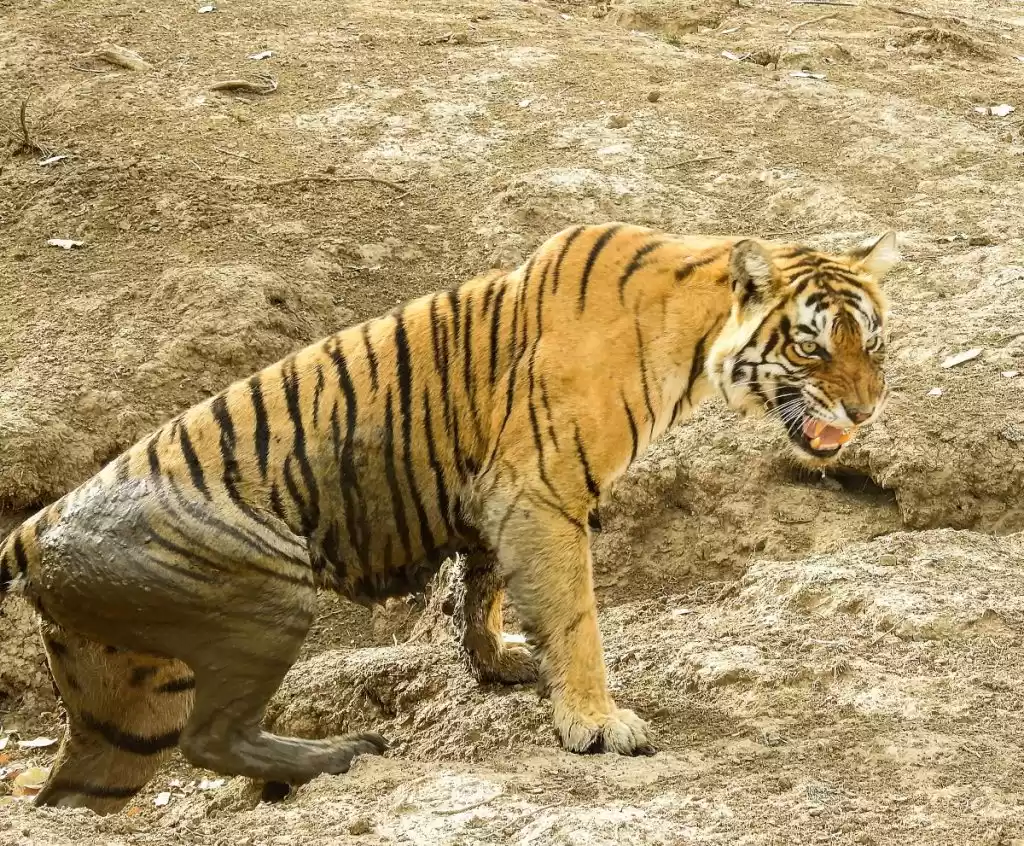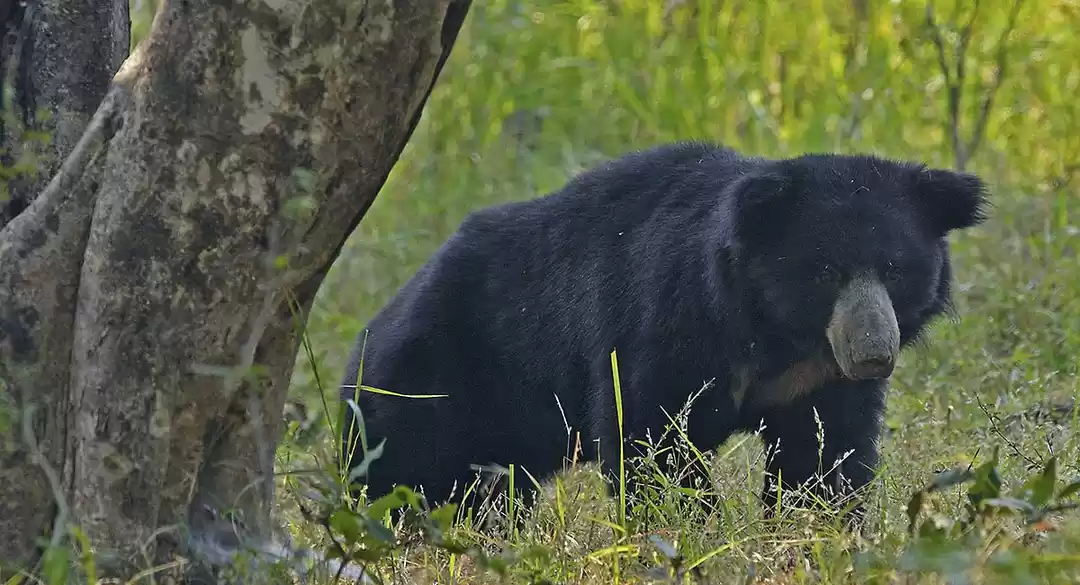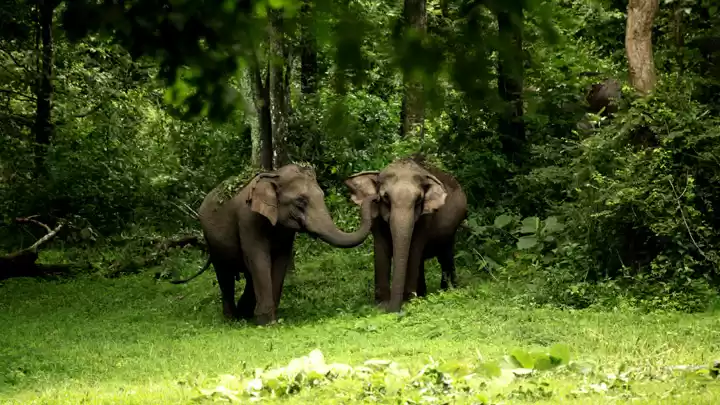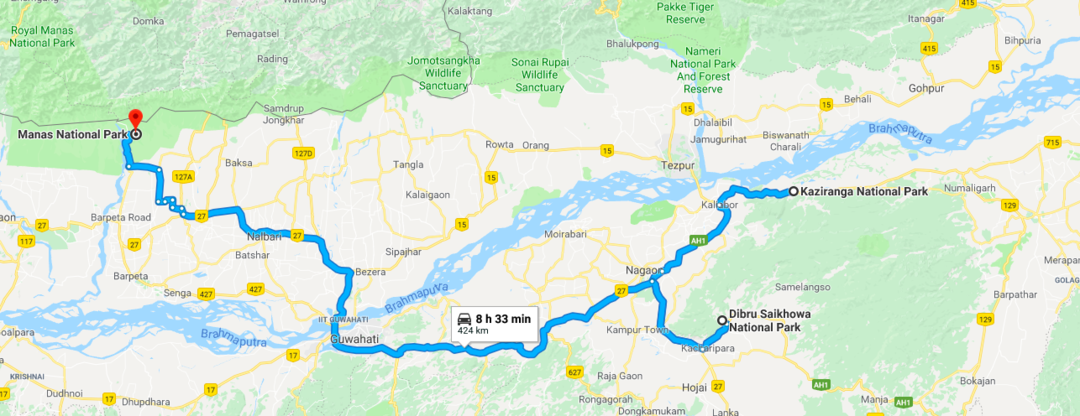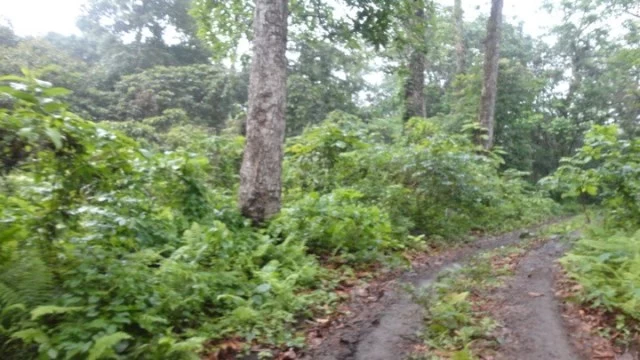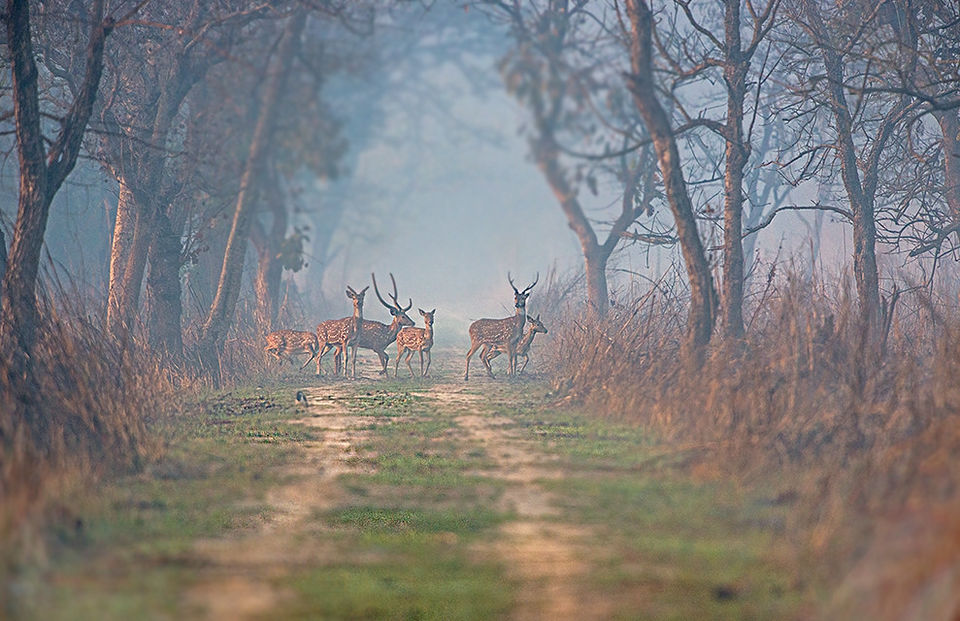
India is a huge country with a variety of habitats. Stretching from tall peaks of Himalaya to coral reefs of Andaman, India has different kinds of forests. With around 19% of the total geographic area under forest cover, India is one of the top 10 megadiverse countries in the world. Despite being the second most populous countries in the world, India has a thriving wildlife and is famous for iconic animals such as Bengal tiger, one-horned rhinoceros, Asiatic lion, Gangetic dolphin, and lion-tailed macaque. Forests in India are protected and are categorized as national parks or wildlife sanctuaries. Today we are going to virtually visit 13 lesser known national parks/wildlife sanctuaries across India. I have curated this list by keeping in mind that every kind of forest type in India is represented. Just like in my post on temples, I have arranged this list from north to south. So, let’s begin.
1. Changthang Wildlife Sanctuary, Ladakh
Ladakh is a high-altitude cold desert. With its picturesque mountains and magnificent monasteries, Ladakh is a famous tourist destination in India. Besides the popular tourist spots, Ladakh hosts amazing wildlife. Changthang is a huge ecoregion in Tibet, a small part of which crosses over in Ladakh. Situated at 4500 m above MSL, Changthang wildlife sanctuary is surrounded by tall snow-clad peaks and emerald lakes. The forest type is high-altitude grassland. The iconic animal found here is, of course, snow leopard. Of note, it is the only place in India where you can find Tibetan wild ass, black-necked crane, and Pallas’s cat. Other than these major attractions, Tibetan wolf, wild yak, bharal, mormot, and numerous migratory birds can be found here. As far as flora is concerned, the sanctuary hosts around 200 species of plants.
Nearest city: Leh
Best time to visit: May to September
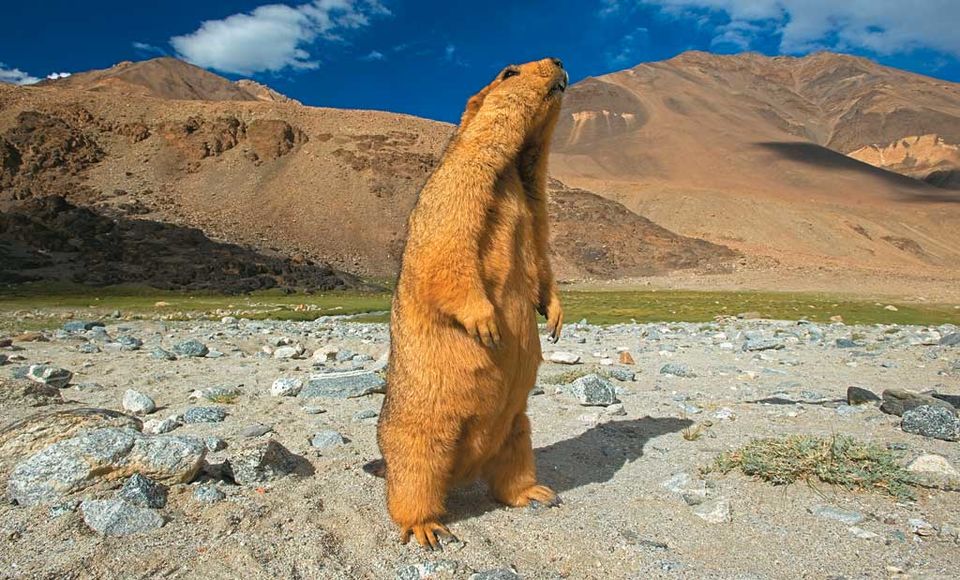
2. Great Himalayan National Park, Himachal Pradesh
India is blessed to have Himalaya at its northern border. The habitat widely differs within different regions of Himalaya. Great Himalayan National Park is a representative of western Himalaya. Nestled in the heart of Himachal Pradesh, this national park spans over 754 sq. km in area ranges between 1500 m and 6000 m in altitude. The forest type is mostly subtropical alpine. The flora mainly consists of pine, spruce, and chestnut. Not to forget the rich vegetation of rhododendrons that makes the forest colorful in spring. The woods are interspersed with lush alpine meadows rich in several species of orchids. The forests host several species of birds. The star attraction is Himalayan monal, a member of the pheasant family known for its vibrant plumage. Western tragopan, the state bird of Himachal Pradesh, is an endangered species found here. Apart from these, over 200 species of birds including Himalayan griffon, lammergeier, Eurasian sparrow hawk, golden eagle, and booted eagle roam these forests. Besides, the park houses snow leopard, bharal, Himalayan brown bear, Himalayan black bear, red fox, and several species of reptiles and amphibians. This national park is a UNESCO World Heritage Site for its outstanding significance of biodiversity conservation.
Nearest town: Kullu
Best time to visit: March-April for flowering plants and October-November for migrating birds and animals
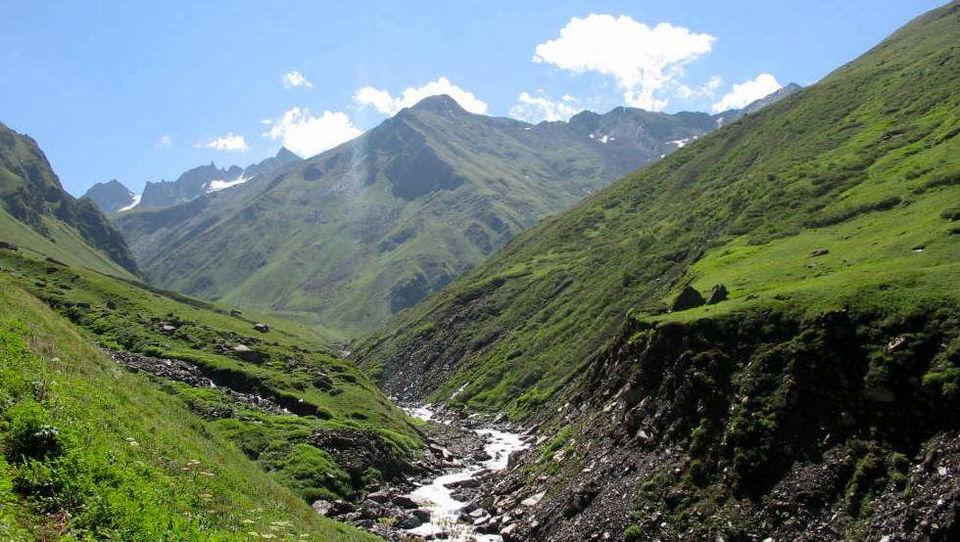
3. Dudhwa National Park, Uttar Pradesh
As you descend from the Himalaya on the plains of North India, you come across vast marshy grasslands known as Terai. These grasslands stretch from Uttarakhand to Assam, and world famous national parks such as Jim Corbet, Chitwan, Manas, and Kaziranga are located in this region. Situated near India–Nepal border, Dudhwa national park is a lesser known gem of the Terai region. The forest is of moist deciduous type and is dominated by sal, sisham, asna, jamun, gular, and bahera. The woodlands are interspersed by grasslands, marshes, and rivers. The iconic animal found here is Barasingha, also known as swamp deer. Additionally, the park houses a stable population of tigers. Recently, one-horned rhinoceros was re-introduced in this park, adding to its faunal diversity. Hispid hare, which was once thought to be extinct, was rediscovered in this park in 1984. Endangered birds such as Bengal florican, sarus crane, and white-rumped vulture are found here. The wetlands of the park are a bird-watcher’s paradise, as more than 400 species of birds are found here during winters.
Nearest city: Lucknow
Best time to visit: October to December

4. Eaglenest Wildlife Sanctuary, Arunachal Pradesh
Nestled in the Hiamalayan foothills of Arunachal Pradesh, Eagelenest Wildlife Sanctuary is a representative of eastern Himalaya. Steep valleys, roaring rivers, lush greenery, abundant wildlife, and unique tribal culture makes this sanctuary unique in India. The altitude ranges from 500 m to 3250 m. The forest type is subtropical alpine. As you start from the plains of Assam, the swampy grasslands slowly convert into bamboo forests, which eventually become coniferous forests on the hill slopes. With more than 500 bird species, this sanctuary is a birdwatcher’s paradise. A new bird species, Bugun liocichla, was recently discovered in this forest. Besides Bugun, the forest houses trogons, tragopans, hornbills, babblers, and many flycatchers. BirdLife International has designated this forest as an Important Bird Area. The sanctuary also hosts mammals such as tiger, Himalayan black bear, gaur, Himalayan serow, leopard cat, golden cat, Bhutan giant flying squirrel, and the most iconic red panda. In fact, a new primate species – the Arunachal macaque – was identified here in 2003. The forest is truly a gem of the Northeast.
Nearest town: Bhalukpong
Best time to visit: March to May
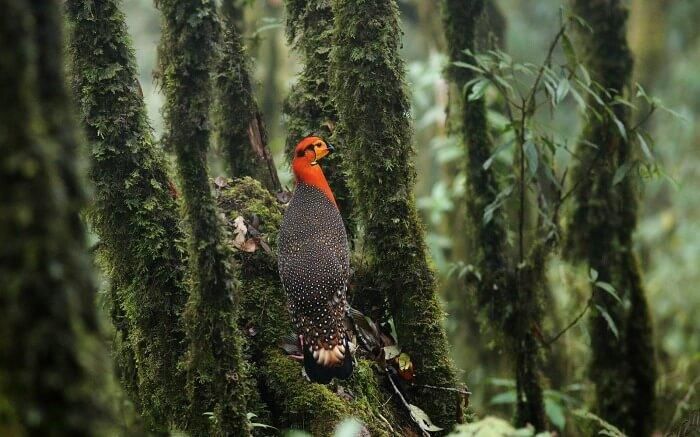
5. National Chambal Sanctuary, Madhya Pradesh
The rivers of northern India constitute a different ecosystem. Massive industrialization, urbanization, and expanding agriculture has choked the main rivers Ganga and Yamuna, making their original wildlife almost extinct. However, wildlife thrives in some of their tributaries. Originating at the northern slopes of Vindhya range, Chambal flows through northwestern Madhya Pradesh and merges with Yamuna in Jalaun district of Uttar Pradesh. Chambal is relatively pollution-free and gives refuge to several birds, animals, and reptiles. National Chambal Sanctuary is a narrow protected zone along the Chambal river cutting across Rajasthan, Madhya Pradesh, and Uttar Pradesh. The most iconic animals found here are gharial, Gangetic river dolphin, and red-crowned roof turtle. Among the 26 rare turtle species found in India, 8 are found in this sanctuary. Moreover, many animals such muggar crocodile, smooth-coated otter, striped hyena, and Indian wolf are found here. With hundreds of migratory bird species calling it home, the sanctuary is an Important Bird Area. Indian skimmer, Pallas’s fish eagle, and Indian courser are some of the endangered bird species found here. This off the beaten track sanctuary is a must on your itinerary to Madhya Pradesh.
Nearest city: Gwalior or Agra
Best time to visit: October to December
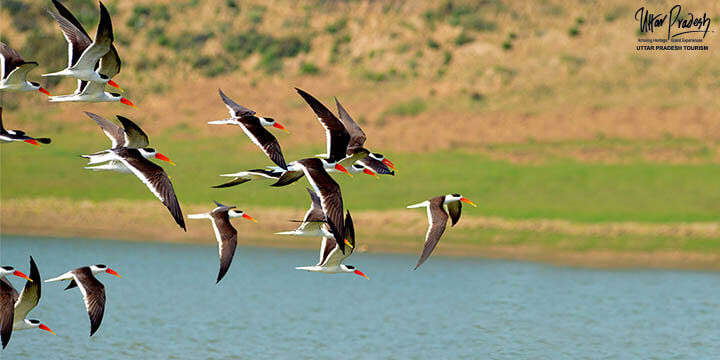
6. Dehing Patkai Wildlife Sanctuary
With more than 60% of the area under forest cover, Northeast India dominates the wildlife landscape of India. Assam, the eldest among the seven sisters, is no exception. Besides the world-famous national parks such as Manas and Kaziranga, Assam has a well-kept secret in its easternmost corner – Dehing Patkai Wildlife Sanctuary. Spread over Dibrugarh and Tinsukia districts, this lowland tropical evergreen forest is often called as Amazon of the east for its dense vegetation and rich biodiversity. This forest has the highest diversity of non-human primates such as hoolock gibbon, slow loris, pig-tailed macaque, stump-tailed macaque, and capped langur. Moreover, from small cats such as marbled cat, leopard cat, and golden cat to big cats like clouded leopard and Bengal tiger, various felines call this forest home. Asian elephant, Himalayan black bear, and barking deer are some other animals found here. The forest houses around 300 species of birds. The avifauna includes vultures, hornbills, warblers, adjutants, eagles, and ducks, around 10% of which are altitudinal migrants. Being a moist rainforest, the flora consists of numerous ferns, bryophytes, epiphytes, and orchids. Hollang, Mekai, Dhuna, and Udiyam are some of the common trees found here. With its rich flora and fauna, Dehing Patkai is truly the crown of Indian rainforests. With recent clearances for mining from the government of India, this forest is at threat.
Nearest town: Tinsukiya
Best time to visit: October to December
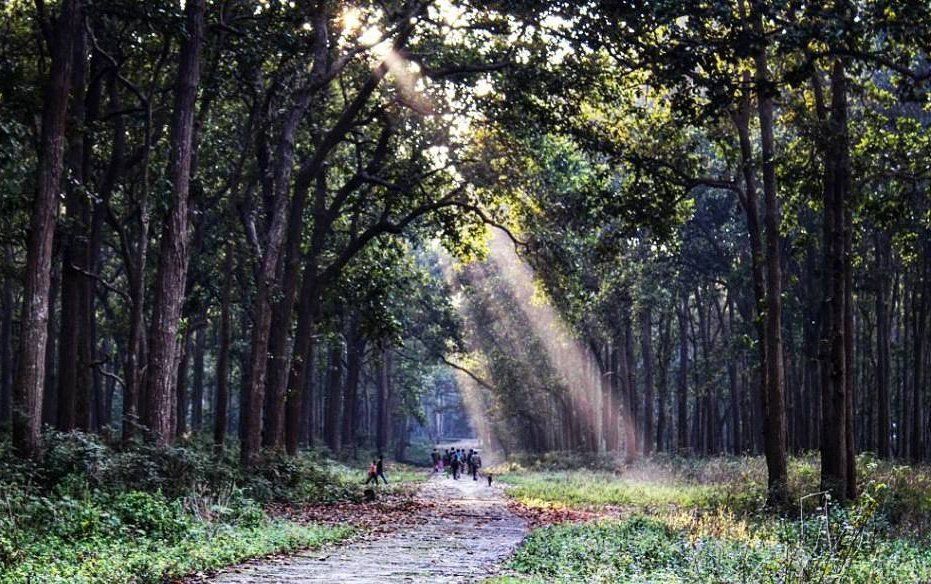
7. Tal Chhapar Wildlife Sanctuary, Rajasthan
Located in the Churu district of northwestern Rajasthan, Tal Chhapar Wildlife Sanctuary is a haven for grassland fauna. It is particularly famous for a beautiful Indian antelope, blackbuck. The sanctuary came into spotlight after Salman Khan’s blackbuck hunting case. In the local language, “tal” means a flat depression in a slightly elevated land. This sanctuary is situated in a flat saline depression at the fringe of Thar desert. The forest type tropical thorn forest, which hosts acacia and prosopsis (khejri) trees. A special kind of grass, locally known as Mothia, is found here. The ecosystem is quite similar to African Savannah. Apart from blackbucks, desert cat and desert fox are the two iconic animals found in this sanctuary. The sanctuary welcomes several migratory birds every winter. Birds of prey such as eastern imperial eagle, tawny eagle, short-toed eagle, Montague’s harrier, marsh harrier, pale harrier, and sparrow hawk are found here. Besides, ground dwelling birds such as patridge and sand grouse call this grassland home. Resident birds including green bee-eater, spotted dove, skylark, and ring dove also inhabit the grassland. The sanctuary is a heaven for birdwatchers. The local Bishnoi community has immense love and respect for the environment and help in sustaining the wildlife in the sanctuary.
Nearest town: Churu
Best time to visit: November to February

8. Indian Wild Ass Sanctuary, Gujarat
Rann of Kuchh, a spot that has recently emerged on the tourism landscape of India, is a unique habitat in Gujarat. It is a low-lying area that gets flooded for a month or two during monsoon and dries up as the monsoon recedes, leaving vast stretches salt plains. The depression is dotted with elevated areas, locally known as “bet”, which support grasses and several desert animals. The Rann is divided into two parts: great and little. Among these, little Rann of Kuchh is a relatively smaller area located northwest of Ahmedabad, which is now declared as Indian Wild Ass Sanctuary. The iconic animal found here is, of course, the Indian wild ass. Locally known as Ghudkhar, this animal is the fastest running animal in India. It can run up to 70-80 km per hour. Due to habitat loss and environmental changes, the Indian wild ass is at the brink of extinction. Consistent efforts of conservation by the Indian Forest Department has brought up the number in recent times. However, with limitations on expanding the protected area, the survival of this species is in danger. Apart from the wild ass, the sanctuary houses nilgai, desert fox, desert cat, and numerous reptiles. The sanctuary is a great place for birdwatching. The wetlands offer a lucrative place for migratory birds such as cranes and flamingoes. If you go to White Rann for enjoying the moonlit white dessert, do pay a visit to its younger brother to appreciate the rich and unique wildlife of this region.
Nearest city: Ahmedabad
Best time to visit: October to February

9. Nagzira Wildlife Sanctuary, Maharashtra
The Vidarbha region of Maharashtra is famous for its forests and wildlife. In fact, most of the dense forests of Maharashtra are located in the five districts of Vidarbha. Connected with forests of Madhya Pradesh and Chhattisgarh, the forests of Vidarbha form a huge contiguous area of central Indian forests. Apart from famous national parks such as Tadoba and Melghat, this region houses some smaller yet rich patches of forests, Nagzira Wildlife Sanctuary being one of them. Named after the temple of the serpent god located in the middle of the forest, this sanctuary represents tropical dry deciduous forests of central India. The terrain is mostly flat with dense vegetation interspersed with grasslands. The flora comprises teak, sal, ain, bamboo, mahua, and sterculia gum. All trees shed their leaves by December/January and the forest takes up a dusky grey-brown color. In May/June, the temperatures reach up to 50 °C. By the onset of monsoon, the forest metamorphoses into lush green color, marking the beginning of new life. Tiger, leopard, jungle cat, bison, wild dog, sloth bear, wild boar, spotted deer, four-horned deer, sambar, nilgai, and barking deer are the important mammals found here. Besides, the forest houses reptiles such as monitor lizard, crocodile, kind cobra, vipers, and Indian rock python. Numerous birds such as drongo, woodpecker, crested serpent eagle, fish eagle, peacock, jungle owlet, and Indian roller call this sanctuary home.
Nearest town: Bhandara
Best time to visit: Although it is extremely hot, May-June is the best time to watch wildlife as water is scarce and all animals visit water holes at least once in a day.
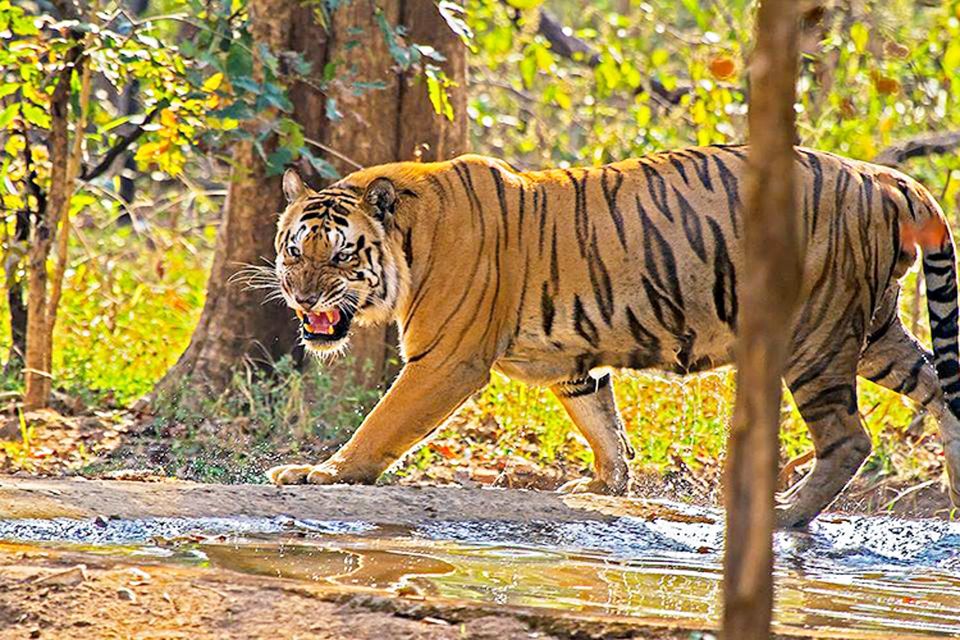
10. Coringa Wildlife Sanctuary, Andhra Pradesh
Mangorve is a small shrub-like tree that grows in saline or brackish water in coastal areas. India has a more than 7000 km of coastline. Massive rivers such as Ganga, Godavari, Krishna, Mahanadi, which drain into Bay of Bengal, create huge deltas where mangrove forests thrive. Besides Sundarban, one of the famous mangrove forests in West Bengal, the east coast of India is dotted with several mangrove forests. Located near the port city of Kakinada, Coringa Wildlife Sanctuary is the second largest stretch of mangrove forests in India. The terrain mainly comprises countless streams of brackish water that swell during high tide and shrink during low tide. The only means of exploring the sanctuary is taking a boat trip. Spread across the delta region of Gomathi and Godavari, this mangrove forest houses 24 species of mangrove trees and 120 species of birds. Most of these birds are waders, i.e., birds of wetlands. These include painted stork, openbill stork, pelican, avocet, sandpiper, plover, stint, redshank, ibis, egrets, and herons. Apart from waders, several species of kingfishers, cormorants, and gulls are found here. Critically endangered species such as white-backed vulture and long billed vulture also call this sanctuary home. The mudflats provide refuge to several invertebrates, which become food for the birds. The sanctuary has a thriving population of golden jackal, smooth-coated otter, and fishing cat. The nearby islands are breeding spots for olive ridley sea turtles. Overall, this sanctuary is a hotspot for coastal and marine biodiversity. Andhra Pradesh government is developing it into an ecotourism center.
Nearest city: Kakinada
Best time to visit: November to February

11. Bhadra Wildlife Sanctuary, Karnataka
Western ghats are a mountain range that runs parallel to the west coast of India, stretching from Gujarat to Kerala. It creates a barrier for the southwest monsoon, dividing the peninsular India into two distinct climatic zones: the coastal areas with high rainfall and hot-humid climate and the plains of deccan with low rainfall and continental climate. Bhadra Wildlife Sanctuary is located on the eastern slopes of Western ghats, in Shimoga and Chikmagalur districts of Karnataka. The terrain is quite diverse, as the elevation of the sanctuary varies from 600 m to 1900 m above MSL. Forest types vary from semievergreen forests and shola grasslands to dry and deciduous forests. The common trees include crape myrtle, Ceylon oak, teak, rosewood, fig, toddy palm, Indian laurel, and bamboo. Several medicinal herbs are found in these forests. A thriving population of 33 tigers (as per 2011 data) is found in this sanctuary. Besides tigers, the sanctuary houses leopard, elephant, sloth bear, jackal, jungle cat, bison, wild dog, spotted deer, sambar, muntjac, mongoose, and Malabar giant squirrel. Vine snake, commo cobra, rat snake, king cobra, are monitor lizard are some of the reptiles that roam these forests. Several birds such as Malabar hornbill, southern imperial green pigeon, black napped flycatcher, Malabar whistling thrush, orange-headed thrush, tickle’s blue flycatcher, shama, black capped woodpecker are found here. Being in the heart of Western ghats, this sanctuary represents one of the top ten biodiversity hot spots in the world.
Nearest town: Birur
Best time to visit: October to May
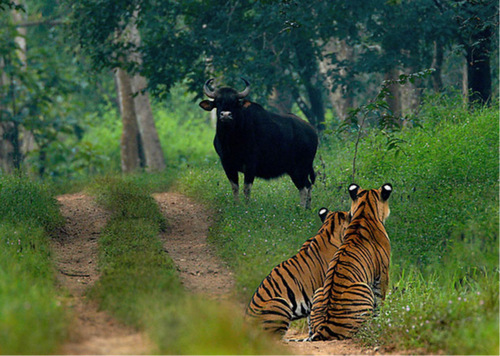
12. Silent Valley National Park, Kerala
As you go from north to south, Western ghats keep rising in altitude, eventually reaching the height of 2695 m at Anamudi in Kerala. The steep valleys of western ghats and the tropical climate of Kerala create a suitable environment for rain forests. The Silent Valley National Park is one such rain forest hidden in the valleys of Western ghats. In the 1970s, plans for constructing a hydroelectric project sparked a conservation movement named “Save Silent Valley”. Eventually, the project was dropped and the forest was declared a national park. The altitude varies from 800 m to 1200 m. The park receives around 7000-9000 mm rainfall per year, which is mostly concentrated from June to September. The flora consists of 1000 species of flowering plants, 108 species of orchids, 100 types of ferns, and 75 species of lichens. Most of these species are endemic to Western ghats. There are about 34 species of mammals, including endemic species such as lion-tailed macaque, Nilgiri langur, Nilgiri tahr, Malabar giant squirrel, and hairy-winged bat. Several rare and endemic bird species such as Nilgiri wood pigeon, Malabar grey hornbill, Nilgiri laughing thrush, Nilgiri flycatcher, and Ceylon frogmouth roam through these forests. New species of amphibians are reptiles are still being discovered in this forest. Silent Valley National Park is the most preserved rainforest of South India.
Nearest city: Coimbatore
Best time to visit: November to February
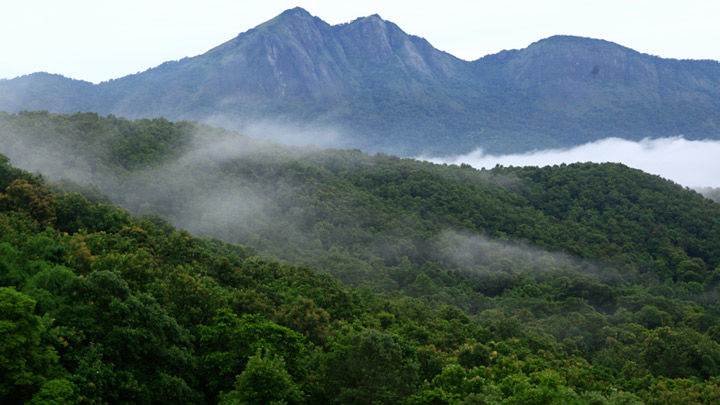
13. Gulf of Mannar Marine National Park, Tamilnadu
A marine national park is often unheard of in India. Despite having more than 7000 km of coastline, the awareness regarding marine wildlife is considerably low in India. Nonetheless, India is blessed with a marine biodiversity hotspot: the Gulf of Mannar Marine National Park. It is located off the southern coast of Tamilnadu and comprises 21 islands between Thoothukudi and Dhanushkodi. The park comprises mangroves, mudflats, coral reefs, and intertidal zones spread across the islands. Several species of seagrasses and sea weeds make up the flora of the park. Dugong, a marine mammal, is the flagship mammal of this park. The park is an important habitat for cetaceans such as bottlenose dolphin, Risso’s dolphin, and dwarf sperm whale. A unique animal called Balanoglossus, which marks the link between vertebrates and invertebrates, is found in the intertidal zone of this park. The reefs contain 106 species of corals. The surrounding coastal areas have a dense population of 100,000 people who mostly rely on fishing as a source of income. Despite fishing activities and pollution, the coral cover in this park is in a healthy condition and requires further protection.
Nearest town: Tutikorin or Mandapam
Best time to visit: Throughout the year






